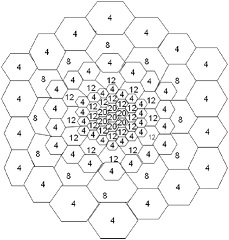Reference no: EM132620695
ITC513 Wireless Networking Concepts - Charles Sturt University
Learning outcome 1: be able to critically analyse wireless networking concepts and their applications in real life situations;
Learning outcome 2: be able to analyse and describe wireless signalling techniques and radio frequency communications;
Learning outcome 3: be able to investigate and evaluate various wireless networking protocols and standards;
Learning outcome 4: be able to compare and contrast different wireless networks in terms of size, speed, limitations and applications;
Learning outcome 5: be able to investigate and evaluate emerging wireless networking technologies;
Learning outcome 6: be able to investigate theoretical and practical issues relating to wireless technology and communicate the results to specialist and non-specialist audiences;
Learning outcome 7: be able to identify the challenges and security issues posed by wireless networks.
Assessment item - Tasks and Design Project
TASK
This assessment has three components; there are two tasks that you need to complete and submit via Turnitin. Task 3 is a question & answer session with your lecturer in class or online meeting.
Task 1: Free Space Propagation and Path Loss
In a free space wireless propagation environment, transmit power between a transmitter and receiver usually decreases due to free space path loss denoted as Lf (dB) and can be expressed as a function of distance d between the transmitter and receiver. Your task is to calculate and plot the path loss Lf (dB) for a distance d = 0 to 30 km and carrier frequency f c = 200, 500 and 1500 MHz. Assuming that the transmit power Pt is 100 watts, you can calculate and plot the received power Pr as a function of distance d (as given above) for the carrier frequencies given above. You can assume transmit and receive antennas gains are the same, i.e. Gt = Gr = 0 dB .
Deliverable: You are required to plot path loss Lf (dB) as a function of distance for each carrier frequency, so you will have three curves in the plot. You also need to plot received power Pr as a function of distance d for each carrier frequency, so you will have three curves of the received power. You need to submit your executable GNU Octave code along with the plots in a single Word file.
Task 2: Research Project
1. You are working as Network Design Engineer with local service provider and your manager has asked you to propose the design for the below cellular architecture shown in Figure 1. In your design provide the following information with reasons; Base station sites locations, Antenna specification (such as antenna shape, height, gains etc), mention the type of the area considering the cell size (such as suburban, metropolitan, rural etc) and justify you design. Note that the numbers within each cell are representing the traffic density in Erlang.
2. Looking at the figure below, justify the design of this cellular network with appropriate reasoning?

Figure 1: Cellular Architecture
|
Medium-sized telecommunications equipment manufacturer
: senior member of the finance team assigned to lead the investment committee of a medium-sized telecommunications equipment manufacturer.
|
|
Different sizes of various cellular components
: To get an idea of the different sizes of various cellular components, do the following calculations: Assume that the cell, its nucleus, and a globular protein
|
|
How do estimate cost of ending work in process inventory
: Estimate the cost of ending work in process inventory and the cost of units transferred out of the department during October using the FIFO method.
|
|
Early pliocene hominin ardipithecus ramidus
: Illuminate (investigate, illustrate {draw, diagram, print}, describe, and explain) what scientists have discovered regarding the major biological, ecological
|
|
Challenges and security issues posed by wireless networks
: Investigate and evaluate emerging wireless networking technologies and identify the challenges and security issues posed by wireless networks.
|
|
Results suggest regarding travis hypothesis
: What do your results suggest regarding Travis's hypothesis that a population of large, predatory monsters (plesiosaur or otherwise) prowls the murky depths of L
|
|
Tracked so trends and improvement opportunities
: What type of user complaint information should be tracked so trends and improvement opportunities can be identified.
|
|
Diffusion and electrostatic pressure account
: How do diffusion and electrostatic pressure account for the chemical composition of intracellular and extracellular fluids when the neuron is at rest?
|
|
Define stereotype threat with example
: The effect has been observed in women, African Americans, white males, Latino Americans, third-grade American school girls, Asian-American students.
|